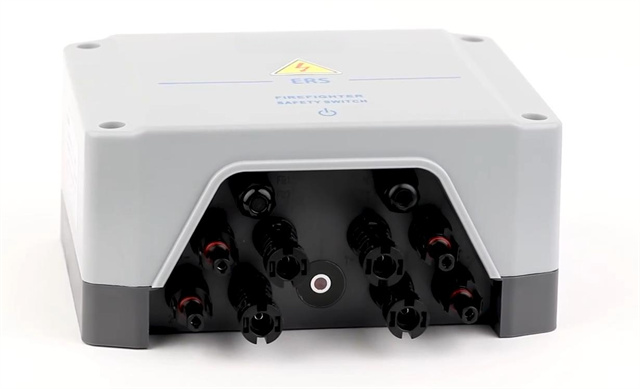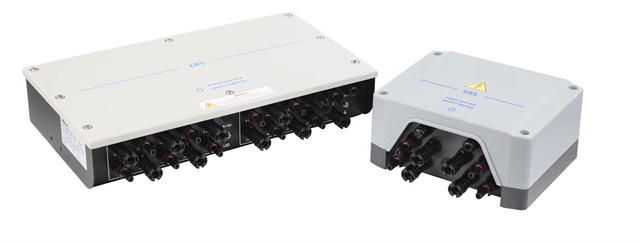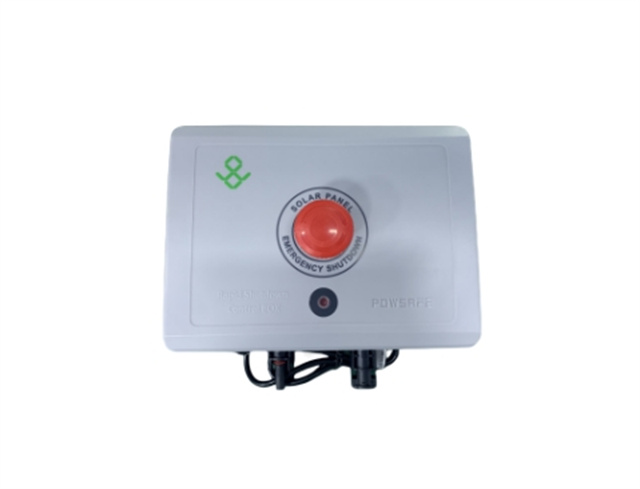Author:BLD Solar Energy SystemFROM:Solar System Converter Manufacturer TIME:2023-08-28
Overview:
SolarEdge Rapid Shutdown Switch is a crucial component in the field of photovoltaic (PV) technology. It ensures safety and compliance by rapidly shutting down the PV system in case of emergencies or maintenance activities. This article will delve into the significance of SolarEdge Rapid Shutdown Switch and provide a step-by-step guide on how to effectively use it.
The SolarEdge Rapid Shutdown Switch is designed to enhance safety measures in the solar industry. In the event of a fire, natural disaster, or any situation that requires immediate shutdown, this switch provides a reliable means to disconnect the PV system from the grid. It helps prevent electrical shocks, eliminates the risk of arc-faults, and protects both installers and emergency responders.
One of the key advantages of the SolarEdge Rapid Shutdown Switch is its ability to meet the National Electrical Code (NEC) requirements. It guarantees compliance by ensuring that the system shuts down within 30 seconds, reducing the voltage level to a safe threshold.
To maximize the benefits of the SolarEdge Rapid Shutdown Switch, it is important to understand its components and installation process. By doing so, we can ensure the smooth functioning of the PV system while prioritizing the safety of all involved.

The SolarEdge Rapid Shutdown Switch consists of several essential components that work together to provide effective shut-off capabilities. These components include the Power Optimizer, the Gateway, and the Switch itself.
The first step in the installation process is to mount the Power Optimizers near each solar module. This allows individual module performance monitoring, optimization, and shutdown capability. The Gateway is then installed, which serves as the communication hub between the Power Optimizers and the SolarEdge monitoring platform. It enables remote monitoring, system management, and firmware updates.
Finally, the SolarEdge Rapid Shutdown Switch is installed at a convenient location, allowing for easy access during emergencies or maintenance activities. It acts as the main shut-off switch, disconnecting the system from the grid within seconds. Proper labeling and clear identification of the switch are essential to ensure that it can be easily identified during critical situations.

Once the SolarEdge Rapid Shutdown Switch has been properly installed, here is a step-by-step guide on how to effectively use it:
Step 1: Familiarize yourself with the switch location: Know the exact location of the switch and ensure that it is clearly labeled.
Step 2: Prepare for emergencies: Train all individuals who may access the switch on how to use it in emergency situations. This includes installers, maintenance personnel, and emergency responders.
Step 3: Activate the shutdown process: In case of an emergency or maintenance activity, locate the switch and turn it to the "off" position. This action will rapidly shut down the PV system and ensure safety.
Step 4: Verify shutdown: After activating the switch, double-check that the system has indeed shut down. This can be done by monitoring the Power Optimizers through the SolarEdge monitoring platform.
Step 5: Document and report: Keep a detailed record of any shutdown events or maintenance activities that required the use of the SolarEdge Rapid Shutdown Switch. This documentation ensures regulatory compliance and helps identify any potential issues.
In conclusion, the SolarEdge Rapid Shutdown Switch is an indispensable tool in the PV industry. Its ability to ensure safety and compliance by rapidly disconnecting the PV system during emergencies or maintenance activities cannot be overstated. By understanding its importance, components, installation process, and proper usage, we can optimize the functionality of the switch and prioritize the well-being of all individuals involved in the solar energy sector.
